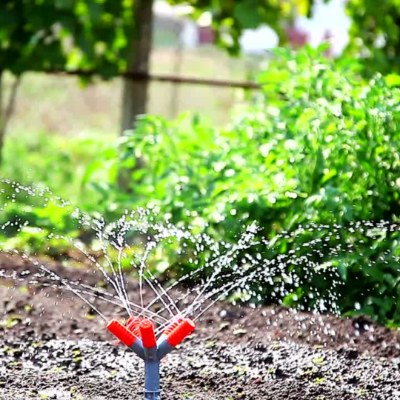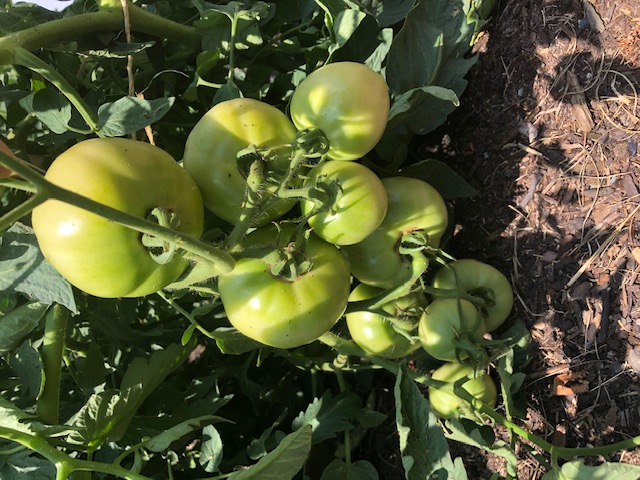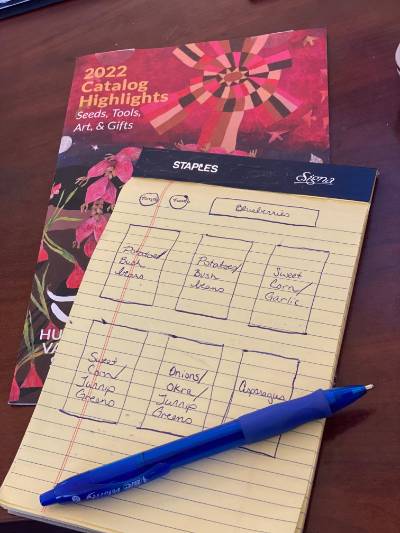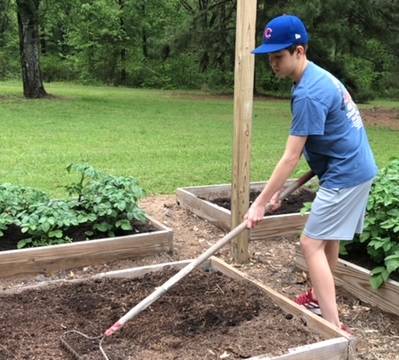Self-Sufficient U
Contact
Clark County Extension Service
Amy Simpson, Horticulture
Cindy Ham, 4-H and Ag
JoAnn Vann, Family & Consumer Sciences
Phone: 870-246-2281
Email: clark-arkadelphia@uada.edu
640 S 6th Street Suite B
Arkadelphia, AR 71923
Four Tips to Creating the Perfect Garden Plan

Want to grow your own produce but not sure where to start? Follow our tips for creating the plan that's right for you!
By Amy Simpson
January and February are sleepy planting months, but we gardeners are cheered by the arrival of seed catalogs in our mailboxes! The beautifully colorful pictures make us a little starry-eyed and get us excited for all the possibilities of things we can grow this year.
If you’re like me, you’ve got to pull the reins back on what you will allow yourself to order. I remind myself that as a working mom I wouldn’t have time to do justice to all the vegetables I would love to grow if I allowed myself to order everything that caught my eye.
Some of us have been gardening for years but others turned to growing fruits and veggies out of necessity (or boredom!) during the pandemic. Home gardening in Arkansas really caught on and we get a LOT of calls about gardening now at our Extension office here in Arkadelphia.
The trend in home gardening is great! Growing your own vegetables allows you to try different, fun varieties that you probably can’t find in the stores, relieves stress, provides the freshest of produce, and allows full control of what pesticides are used. It also teaches kids where food comes from and the labor involved in putting fresh produce on the table.
Whether you’re an experienced gardener or first-time gardener, it’s always best to start with a garden plan.
Did you start gardening for the first time during the pandemic, or are you wanting to start this year? The first thing to do for a more organized, enjoyable experience, is to create a garden plan. This plan will also be important in the years to come, so that you have records of what you planted where. Then you can rotate your crops accordingly.
Don’t be intimidated! Just start with these 4 easy steps to creating a garden plan:
- Location, location, location

Choose a well-drained, sunny spot for your garden. By sunny, I mean an area that receives at least 6 hour of sunlight each day. Hopefully, you have a nice loamy soil to plant your garden in, but if you are like me, your lawn could be a gravel pit, so raised beds it is! Here’s a link to how to build a raised bed garden.
Make sure the area is near enough to your water hydrant that irrigation is easy. Dragging a 100-foot hose each time you need to water can become a chore. Consider trying drip irrigation to conserve resources.
Locating the garden close to your home will make it more convenient. Better yet, place the garden near the kitchen to make it easier for the cook to get the veggies washed up and ready to cook.
- Determine what crops that you and your family will actually eat.
This sounds obvious, but I have been known in the past to plant 6 eggplants, when
I am the only one in the family that actually eats eggplant. That is far too many
eggplants for one person!
Planting a quarter acre of turnip greens sounds cool unless your kids don’t eat turnip greens. You’ll be inviting the entire neighborhood over to pick greens, but you know what? That’s cool too.
Most families have their favorite vegetables. I know in my family, we’ll eat squash, zucchini, tomatoes, potatoes, bell and jalepeno peppers, okra, and sweet corn. While I might try different varieties within that list, I generally don’t stray outside it.
Having said that, I think it’s a great idea to try new things. Just try them on a small scale the first year to make sure your family will eat them.
Poll your family and make a list of their favorite vegetables. I encourage you to keep it simple at first. Check out our Year-Round Home Garden Guide to see when you plant different vegetables in Arkansas. Then visit online seed companies, look through seed catalogs, or visit your local farm store to find your seeds. Bonus tip: look for varieties that offer disease resistance.
If you end up with too much produce, consider donating it to a local pantry.
- Be realistic about your time.
I’m so gung-ho during spring planting. It’s finally getting a little warmer, the trees
are putting out new leaves, and nature feels like it’s being reborn. I want to contribute
to that!
I grew up a farmer’s daughter in the Arkansas delta, and there’s something in me that just needs to till the earth and plant seeds that promise to bring a crop. The smell of freshly turned soil just does something for my soul. So, I plant eagerly and excitedly.
Then, life happens. Both of my kids play ball which leads me to being at either a softball or baseball field several nights a week and many weekends throughout the spring and on into the summer. It’s also growing season for the farmers I work with, so that means I’m scouting fields, sometimes past regular work hours. Oh, and we also enjoy boat time on our local lake. By mid-July, my garden can start to look a little ragged.
Because of all these things, I know realistically that I cannot maintain a large garden. For the season of life I am in, I need to keep my garden fairly small. Maybe that’s not the case for you.
When determining how big your garden will be, just be realistic about how much time you can spend weeding, monitoring insects and diseases, watering, fertilizing, and harvesting your garden before you bite off more that you can chew.
You also need to consider how much freezer and pantry space you have for food storage. If your garden is large, and it produces more that you can consume fresh, then you can preserve it. Do you have the space for that? For those of you with very limited space, consider creating a straw bale garden which can be both affordable and portable!
- Put the plan to paper

Make a drawing of your garden plan. How long will your rows be? Where will you locate the tomatoes? Will you need trellises for anything?
This doesn’t have to be fancy. Even a rough drawing will help when it comes time to plant.
In my opinion, the most important reason to draw out a plan is so you can use it in upcoming years to make sure you are rotating your crops as you should.
Crop rotation ensures that you don’t plant the same family of crops in the same spot each year. This reduces insect and disease pressure.
So, jot down your plan and file it away where you can find it next year. Check out our garden planning page with fact sheets for more information.
I know it’s still winter, but planting season will be here before we know it! Many cool season crops like potatoes and onions can be planted in February in south Arkansas. Create your garden plan and start dreaming of warmer temps and getting your hands in the soil.
Remember these four simple steps to creating a garden plan for beginners:
- Properly locating your garden will set the foundation to the success of your garden.
- Only plant what you know your family will eat.
- Determine how large of a garden you can maintain realistically
- Draw out a plan of what you will plant and where you will plant it, and keep for your records.
Questions?
Related resources
- Grow Your Own Groceries:
- Gardening from the Ground UP:
- Beekeeping - Apiculture in Arkansas
- Take the Hobby and Small Flock Poultry in Arkansas course
- Arkansas Food Freedom Act for homemade food sales
- Arkansas Emergency Preparedness
- Food Preservation
Podcasts:
